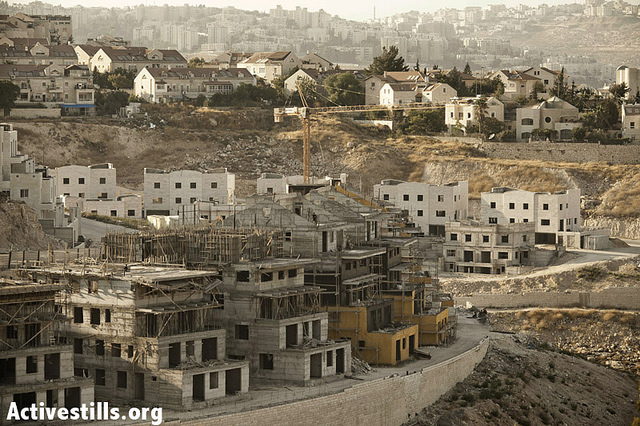Pisgat Ze’ev is one of Israel’s ‘ring neighborhoods,’ separating Palestinian East Jerusalem from the rest of the West Bank. Settlement watchdog says tenders could not have been published without Netanyahu’s approval.

The Israeli government published tenders for 77 new housing units in the settlements of Pisgat Ze’ev and Neve Yaakov in occupied East Jerusalem Monday morning. The tenders follow a six-month gap in published settlement plans for the Palestinian part of Jerusalem
The move comes against a backdrop of a spike in violence in the area. A Palestinian teenager was shot dead by a checkpoint security guard at a-Zayim on Friday night after allegedly trying to stab a policeman; three Israeli police officers were injured near a-Tur neighborhood after being hit by a car on Saturday, following a day of clashes between police and Palestinians in the area; and unrest continued in a-Tur on Sunday, with dozens of injuries reported. Clashes also occurred early Monday morning surrounding the funeral of the youth shot on Friday in a-Tur.
Pisgat Ze’ev is located near Shuafat and Hizma, and with 50,000 residents is Jerusalem’s largest residential neighborhood. It is serviced by the Jerusalem light rail, which winds through East Jerusalem’s Palestinian neighborhoods before arriving at the settlement. Neve Yaakov is located north of Pisgat Ze’ev, with 30,000 residents.
Both settlements are among Jerusalem’s “ring neighorhoods,” which fan out around the edges of East Jerusalem, sitting between it and the rest of the West Bank. The E1 area, where settlement activity is also underway, is the last remaining corridor through the ring that allows access between the northern and southern parts of the West Bank.
Today’s tenders are significant because they are the first such decision taken by Netanyahu following his election victory, explained Daniel Seidemann of Terrestrial Jerusalem, an Israeli NGO that tracks any developments in the city that may affect the political process. “These tenders could not have been published without the prime minister’s supervision, and represent Netanyahu testing the waters.”
The announcement is also a possible indicator of how settlement activity in East Jerusalem will proceed, Seidemann continued: “Large-scale construction in East Jerusalem has been pretty much exhausted. We’re now likely to see more tenders of this type – tens of units here, tens of units there.”
There is, along with E1, one last large building project in Jerusalem, which Seidemann referred to as a “doomsday settlement.” Givat HaMatos, in south Jerusalem, will cut off East Jerusalem from Bethlehem when completed.
Until then, however, the Israeli government’s battle for property and land in East Jerusalem will continue to be a war of attrition against local Palestinians: tenders such as those published today; settler takeovers of Palestinian property; and official government eviction notices served to Palestinian families.
Each move takes place under the broad umbrella of the Judaization of East Jerusalem, and in the city’s febrile atmosphere, even “testing the waters” is a dangerous provocation.

